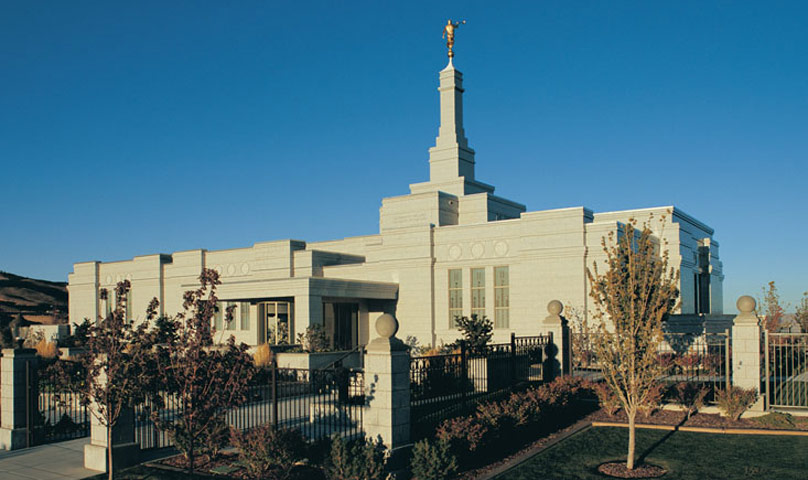Can we put the names of our miscarried or stillborn children on our family group records? Will these children belong to us in the hereafter?
(Val D. Greenwood Morris S. Petersen Morris S. Petersen, "I Have a Question", Ensign, Sept. 1987, 27–29)
The first question is easily answered: Church policy does permit a family to record stillborn children on their family group record if they wish to do so. If the stillbirth takes place after the sealing of the parents, those children can be identified on the record as being born in the covenant (BIC). Miscarriages, however, are not normally recorded on family group records.
A miscarriage is delivery of a dead fetus, before it is viable—that is, before it could have lived on its own outside the mother’s womb. A stillbirth is delivery of the dead fetus that has developed to the point where it would normally have been viable, but for some reason is born dead. The line between a miscarriage and a stillbirth is not clear cut, and sometimes there is a question as to whether the fetus was viable. In this case, the decision to record or not to record the name on the family records is up to the family. The family may give the stillborn child a name for recording purposes, if they desire, and funeral services may even be held. But such children are not reported as births or deaths on Church records.
It should be noted, however, that no temple ordinances are performed in behalf of a stillborn child. Elder Joseph Fielding Smith, quoting President Brigham Young, wrote that “‘they are all right,’ … and nothing in the way of sealings or ordinances need be done for them.” (Bruce R. McConkie, comp., Doctrines of Salvation, Salt Lake City: Bookcraft, 1955, 2:281.)
The question of whether stillborn children will be resurrected and belong to their parents in the hereafter is really the crux of the matter. This question is, as yet, impossible to answer with certainty. Elder Joseph Fielding Smith wrote that “there is no information given by revelation in regard to the status of stillborn children. However, I will express my personal opinion that we should have hope that these little ones will receive a resurrection and then belong to us.” (Doctrines of Salvation, 2:280.) He said nothing about miscarried children.
One issue involved is whether an unborn child in the mother’s womb is a living soul. The answer to that question may depend in part on the answer to another question—When does the spirit enter the body? On this second question some Church leaders have made comments. President Brigham Young said he believed that “when the mother feels life come to her infant it is the spirit entering the body.” (Journal of Discourses, 17:143.)
The message “The Origin of Man” issued by the First Presidency in 1909 stated: “The body of man enters upon its career as a tiny germ embryo, which becomes an infant, quickened at a certain stage by the spirit whose tabernacle it is, and the child, after being born, develops into a man.” (James R. Clark, comp., Messages of the First Presidency of The Church of Jesus Christ of Latter-day Saints, Salt Lake City: Bookcraft, 1970, 4:205.)
Elder Bruce R. McConkie, referring to “The Origin of Man,” expressed his opinion that the message “appears to bear out the concept that the eternal spirit enters the body prior to a normal birth, and therefore that stillborn children will be resurrected.” (Mormon Doctrine, 2d ed., Salt Lake City: Bookcraft, 1966, p. 768.)
It is not clear exactly at what point of development that “certain stage” of quickening—when the spirit makes eternal claim to the body—occurs. Even though quickening occurs before birth, we still do not know definitely when a living soul comes into existence. In fact, some Church leaders have suggested that a living soul does not exist until three essential elements—the body, the spirit, and the breath of life—are all present.
Unfortunately, grief, disappointment, and lack of knowledge sometimes lead some persons to doubt the justice and love of God when a child is delivered without taking the breath of life. At such times, our Savior Jesus Christ, who has suffered for all, has invited us to turn to him so that he may help us bear our burdens:
“Come unto me, all ye that labour and are heavy laden, and I will give you rest.” (Matt. 11:28.)
Traumatic as miscarriage and stillbirth may be from our perspective, they need not end in sorrow. The Apostle Paul has written about how suffering can turn to hope when we experience the love of God:
“We glory in tribulations also: knowing that tribulation worketh patience;
“And patience, experience; and experience, hope:
“And hope maketh not ashamed; because the love of God is shed abroad in our hearts by the Holy Ghost which is given unto us.” (Rom. 5:3–5.)
Though our knowledge of the plan of salvation does not explain why miscarriages and stillbirths take place, nor what the eternal result will be, we can know with confidence that God, who is the father of all spirits, is merciful and just. We can know also that there is hope. Worthy parents can trust in him and know that they and all his spirit children will—one way or another—receive a just reward for their efforts and sacrifice, perhaps in ways that we do not presently comprehend.
Ensign Article Coping With the Heartache of Miscarriage found HERE
Ensign Article Easing the Pain of Miscarriage found HERE



